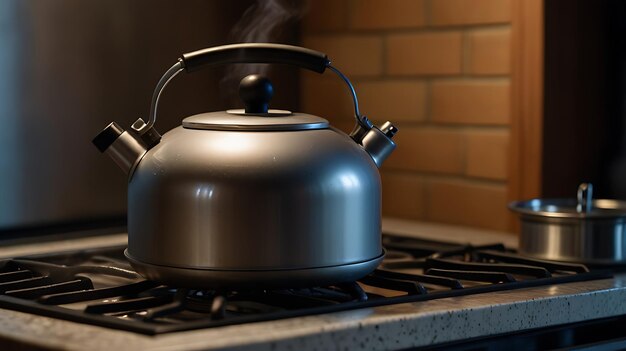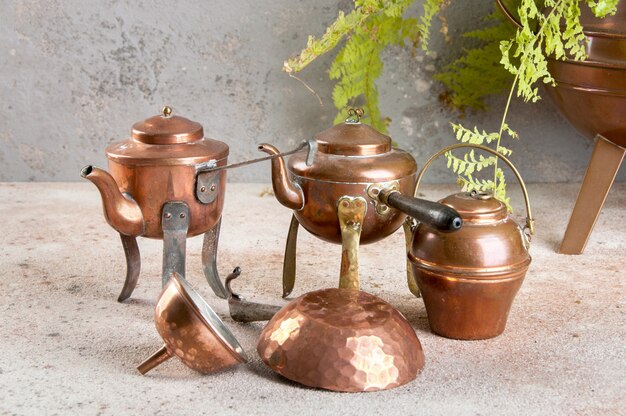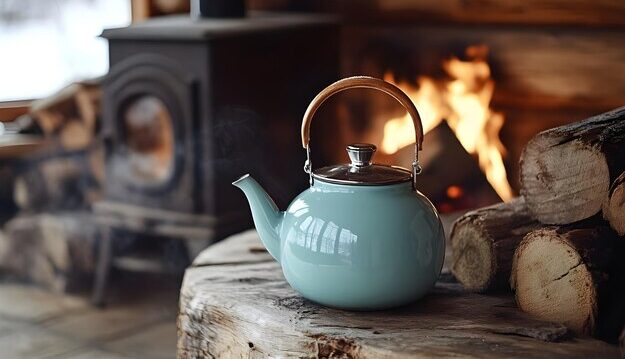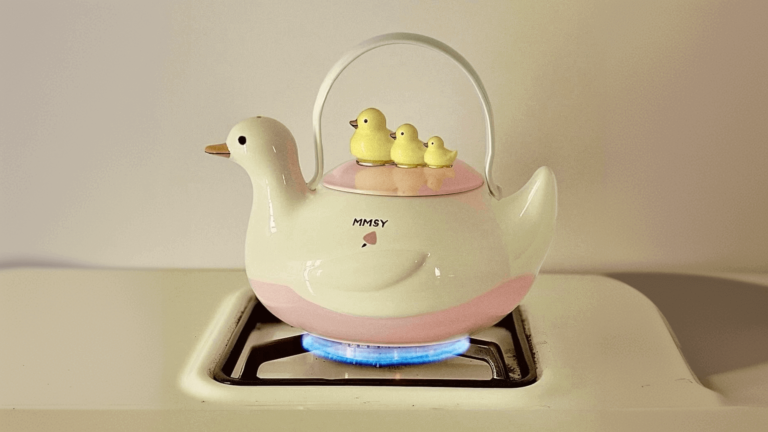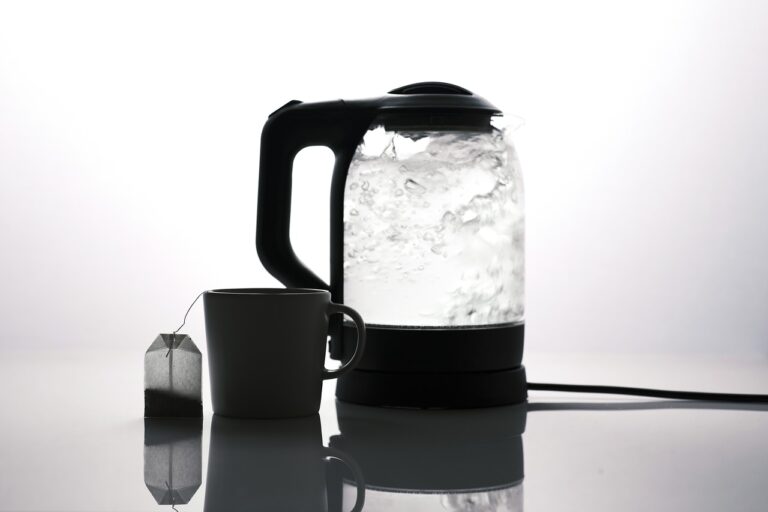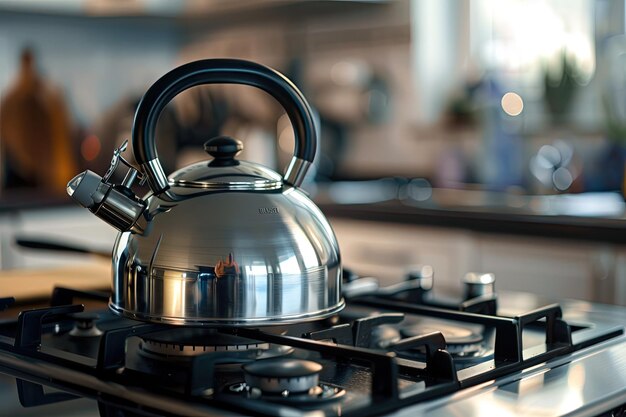How to Use a Stovetop Kettle: Guide to Heating, Pouring, and Cleaning
The stovetop kettles are a classic kitchen accessory that is nostalgic in appearance and will provide functionality to the consumer. For some people, it is much more than an appliance for heating water, thanks to its beautiful whistle and traditional appearance. Learn how to use a stovetop kettle to make your tea, coffee, or any other tasks more enjoyable and safe in a kitchen.
This guide has been developed to help you master the use of a stovetop kettle for various purposes, including boiling water, making tea, and brewing coffee. It also provides information on selecting and caring for your stovetop kettle.
If you’re looking for the best stovetop kettle, check out our 8 Best Stovetop Kettles tested for top performance and quality!
Table of Contents
How To Use a Stovetop Kettle: Step-by-Step Guide
Step 1: Choosing the Right Kettle for Your Stove
Choose a kettle with a comfortable handle, a lid that fits closely, and a material suitable for a stove. If using an inductor, make sure the kettle is designed to work with it.
Step 2: Filling the Kettle with Water
Pour the kettle with the amount of water required, depending on the number of cups to be brewed. Don’t fill it to the top; this will prevent it from overflowing once the contents start boiling. Always filter cold water to make your tea or coffee as you desire.
Step 3: Placing the Kettle on the Stove
Always place the kettle in the middle of the burner to receive an even heat. In the case of gas stoves, the flame mustn’t reach beyond the base of the kettle.
For electric stoves, place it on a flat heating element, and for induction, ensure that it sits on the correct-sized plate.
Step 4: Heating the Water
Place the burner on medium-high heat. If steeping tender tea like green or white tea, slightly reduce the heat of the water used for steeping.
Step 5: Recognizing When the Water is Boiling
Wait for a whistle or see that steam is coming out of the spout. This shows that the water is boiling because it will make a hissing sound when it is boiled.
Step 6: Pouring the Water Safely
When handling the kettle, use an oven mitt. When pouring the water, always pour it slowly so as not to spill any. Turn the kettle to a side to prevent yourself from being burnt by steam.
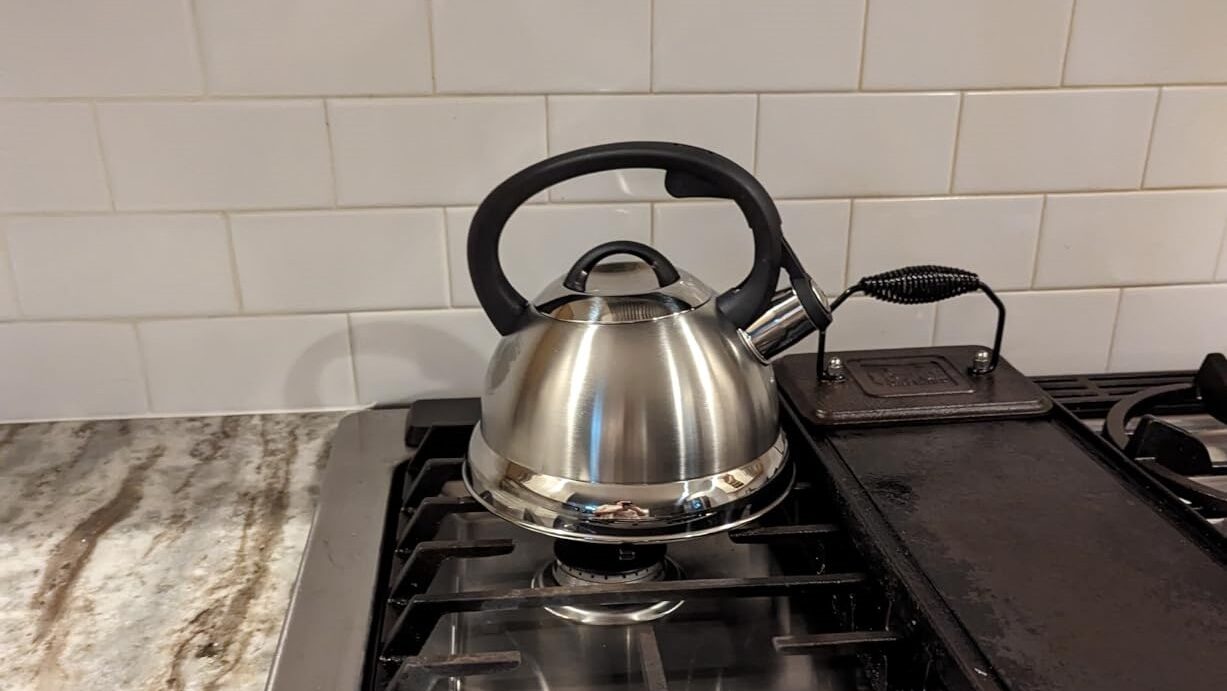
Boiling Water In a Stovetop Kettle: How to Do It Safely and Efficiently
How to Boil Water Efficiently:
To cut down the boiling time, cover the vessel and place it in a wider kettle so that their surface candidates for heat increase.
Optimal Temperatures for Different Uses:
- Tea: The process depends on the type of tea and involves various temperatures. Black and herbal teas require boiling water (212°F), while green tea requires a lower temperature (160- 180°F).
- Coffee: The optimal brewing temperature is 195-205°F.
Safety Precautions When Boiling Water:
Wearing heat-resistant gloves or mittens when handling a kettle is always advisable. Do not let the kettle boil while standing on the kitchen counter.
How to Make Tea in a Stovetop Kettle:
Direct Brewing vs. Using a Teapot:
You can cook tea directly in the kettle, but it is good to know that this may even spoil the appearance of your kettle. Teapot also lets you last the hot water on the tea leaves while offering better control of the steeping time.
Step-by-Step Tea Brewing Guide:
- Choosing the Right Tea: Individuals can choose black, green, herbal, or other kinds of tea according to their desire for tea.
- Water Temperature Guidelines: Reserve the temperatures given below for each type of tea.
- Steeping Times: Black tea should be steeped for three to five minutes, whereas green tea should only be steeped for two to three months. Teas produced from herbs may be brewed for 5-7 minutes.
- Tips for Enhancing Your Tea: Lemon, honey, mint, and any other addition of your choice can be added to create individual cups of tea.
Brewing Coffee with a Stovetop Kettle
French press and AeroPress are the go-to coffee brewing methods when using the stovetop kettle pour-over method.
Step-by-Step Guide for Making Coffee:
- Heating Water to the Perfect Temperature (195-205°F): Either use a thermometer and pour after the water has cooled for five minutes or simply wait about half a minute after boiling before you pour.
- Proper Coffee-to-Water Ratios for Different Brewing Methods: Pour-over coffee should have a 1:15 coffee/water ratio (one cup of coffee to 15 cups of water).
- Pouring Techniques for Even Extraction: Slowly and in a circular manner to ensure even distribution of the coffee grounds at the base of a carafe.
- Recommended Coffee Equipment to Pair with a Stovetop Kettle: There are also some helpful hints, such as using a burr grinder to get beans ground right before brewing, a gooseneck kettle for better-pouring control, and paper filters for a more sanitary brewing process.
Additional Uses for a Stovetop Kettles:
- Using a Kettle for Cooking: Vegetables can be blanched, noodles can be cooked instantly, and oatmeal can be prepared with boiled water.
- Household Uses: Water can be boiled to clean something, placed in a pot to make it humid, or melted to melt ice in winter.
Maintenance and Care Tips for Stovetop Kettles
- Cleaning Your Kettle Properly: Clean the kettle with mild dish soap at least once a week to remove deposits built up over time. Wash until soapy water is gone to minimize its presence on the produce item.
- Descaling Tips: Clean away mineral deposition by pouring a solution of equal parts water and either vinegar or lemon juice into the kettle and boiling. Rinse thoroughly afterward.
- Preventing Rust and Corrosion: Rinse it clean with warm water and dry it after use, then put it in a cool, dry place. Copper and stainless steel kettles should not be cleaned with abrasive cleaners.
- When to Replace Your Kettle: If your kettle starts to leak, rust, or exhibit signs that may affect its safety, you should replace it.
Troubleshooting Common Issues with Stovetop Kettles:
Why Isn’t My Kettle Whistling? Make sure the spout cannot get plugged up and that the lid is closed correctly.
FAQs:
Can I Use a Stovetop Kettle on an Induction Stove?
Yes, if the kettle is made of magnetic materials, for instance, stainless steel.
Is It Safe to Leave Water in the Kettle Overnight?
You should always ensure that you remove the water placed inside the kettle after use to avoid the formation of limescale.
How Often Should I Clean My Stovetop Kettle?
Clean your kettle after every few uses and decal it once a month if you use it frequently.
Conclusion:
Properly handling Stovetop kettles unveils a variety of hot beverages that can be taken together with different roles in the kitchen. This essential kit is still used and cannot be replaced for making tea or coffee, cooking, or even washing utensils.
Try various teas, coffees, and other recipes to get the most out of your stovetop kettle. You can even upgrade to any of the above-listed models.
